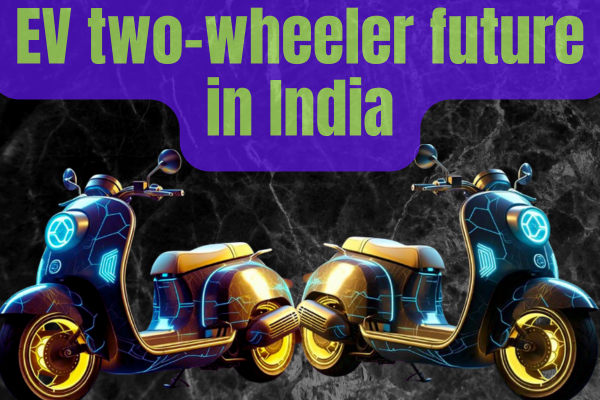
The Electric Two-Wheeler Future in India: Revolutionizing Mobility, One Ride at a Time
India is at the cusp of an electric vehicle (EV) revolution, and two-wheelers are leading the charge. With rising fuel prices, environmental concerns, and rapid urbanization, the EV two-wheeler future in India is no longer a distant dream—it’s a reality unfolding today. This blog dives deep into the trends, policies, and innovations shaping this transformative shift. Let’s explore why electric scooters and bikes are poised to dominate Indian roads and how they align with the nation’s goals of sustainability and economic growth.
Government Policies & Incentives: How India is Fueling the Electric Two-Wheeler Revolution
The Indian government has rolled out aggressive policies to accelerate the adoption of EVs, particularly electric two-wheelers. The FAME-II (Faster Adoption and Manufacturing of Electric Vehicles) scheme is the cornerstone of this push, offering subsidies of up to ₹15,000–₹30,000 per vehicle to make EVs affordable. States like Delhi, Maharashtra, and Gujarat have added their own incentives, such as road tax exemptions and cashback schemes, further slashing ownership costs.
For instance, Delhi’s EV Policy 2023 waives registration fees and offers a 100% loan exemption for students and working professionals buying EVs. The GST reduction on EVs (from 12% to 5%) and lithium-ion batteries (from 18% to 12%) has also incentivized manufacturers to ramp up production. These policies aren’t just reducing prices—they’re building a robust ecosystem for the EV two-wheeler future in India.
Electric vs. Petrol Bikes: Cost Breakdown, Savings, and ROI for Indian Riders
Let’s settle the debate: are electric two-wheelers cheaper than petrol bikes in the long run? Absolutely.
Upfront Cost: While electric scooters like the Ola S1 (₹1.10 lakh) or Ather 450X (₹1.45 lakh) may seem pricier than petrol models (₹70,000–₹90,000), subsidies bridge this gap. Post-incentives, EVs often cost the same or less.
Running Cost: Electricity is cheaper than petrol. Charging an EV two-wheeler costs ₹0.40–₹0.80/km, compared to ₹2.50–₹3/km for petrol bikes. For a daily commute of 30 km, annual savings exceed ₹15,000.
Maintenance: Fewer moving parts mean EVs require minimal servicing—no oil changes, spark plugs, or clutch repairs. Annual maintenance is 60–70% cheaper.
Over 5 years, an electric scooter can save riders ₹1.5–₹2 lakh, delivering a strong ROI while cutting carbon footprints.
Charging Infrastructure 2024: Solving Range Anxiety with Battery Swapping & Smart Grids
Range anxiety—the fear of running out of charge—has long haunted EV adoption. But 2024 is changing the game.
Battery Swapping Stations (BSS) are emerging as a game-changer. Companies like Sun Mobility, Bounce Infinity, and Hero Electric are deploying swap stations where riders can exchange drained batteries for fully charged ones in under 3 minutes. This eliminates charging downtime, ideal for delivery fleets and long-distance riders.
Meanwhile, smart grids and solar-powered charging hubs are scaling up. Tata Power and EESL have installed over 1,500 public charging stations across highways and cities. Apps like Statiq and ChargeZone help users locate stations in real-time. With swappable batteries and faster DC chargers (0–80% in 40 minutes), the EV two-wheeler future in India is becoming seamless.
AI, IoT, and Solid-State Batteries: Tech Innovations Driving India’s EV Two-Wheeler Boom
AI & IoT: Advanced battery management systems (BMS) use AI to optimize performance and predict failures. IoT-enabled bikes like Revolt RV400 offer app-based diagnostics, geo-fencing, and ride analytics.
Solid-State Batteries: Startups like Log9 Materials are developing solid-state batteries with 2x the range (200–250 km/charge) and 15-minute charging. These batteries are safer, lighter, and longer-lasting than conventional lithium-ion packs.
Connected Mobility: Features like over-the-air updates, regenerative braking, and voice commands (e.g., Ola’s MoveOS) are redefining rider experiences.
These innovations aren’t just futuristic—they’re making EVs smarter, efficient, and accessible for India’s masses.
Youth, Urbanization, and Affordability: Why India’s EV Two-Wheeler Market is Surging
India’s youth (60% under 35) and urban population (35% in cities) are pivotal to the EV boom. Young professionals prioritize sustainability, tech-savvy features, and low running costs. Startups like Simple Energy and Okinawa are targeting this demographic with stylish, app-connected scooters priced under ₹1 lakh.
Affordability is another key driver. EMIs as low as ₹2,500/month (via partnerships with Bajaj Finance and TVS Credit) are putting EVs within reach of college students and gig workers. The rise of shared mobility platforms like Yulu and Bounce, offering ₹5/km rentals, is also accelerating adoption.
As cities expand, EVs solve traffic congestion and parking woes—their compact size and agility make them ideal for crowded streets.
Green Mobility: How Electric Two-Wheelers Are Paving the Way for India’s Net-Zero Goals
India has pledged to achieve net-zero emissions by 2070, and electric two-wheelers are critical to this mission. With over 200 million petrol two-wheelers emitting 100 million tons of CO2 annually, switching to EVs could cut transportation emissions by 30–40% by 2030.
States like Kerala and Karnataka are mandating EV-only zones in city centers. Companies like Hero Electric and Ampere are partnering with e-commerce giants (Flipkart, Zomato) to electrify last-mile delivery fleets. Every electric two-wheeler on the road saves ~500 kg of CO2 annually—equivalent to planting 25 trees.
By reducing oil imports (India spends ₹10 lakh crore annually on crude oil) and improving air quality, the EV two-wheeler future in India isn’t just green—it’s a socioeconomic necessity.
Conclusion:
The Road Ahead for India’s EV Two-Wheeler Revolution
The EV two-wheeler future in India is bright, driven by policy tailwinds, tech breakthroughs, and shifting consumer preferences. As charging infrastructure expands and prices drop, electric scooters will become the default choice for millions. For India, this isn’t just about cutting costs or emissions—it’s about reimagining mobility for a sustainable, tech-driven era.
Whether you’re a rider, investor, or policymaker, one thing is clear: the electric two-wheeler revolution is here to stay, and it’s accelerating faster than ever.
